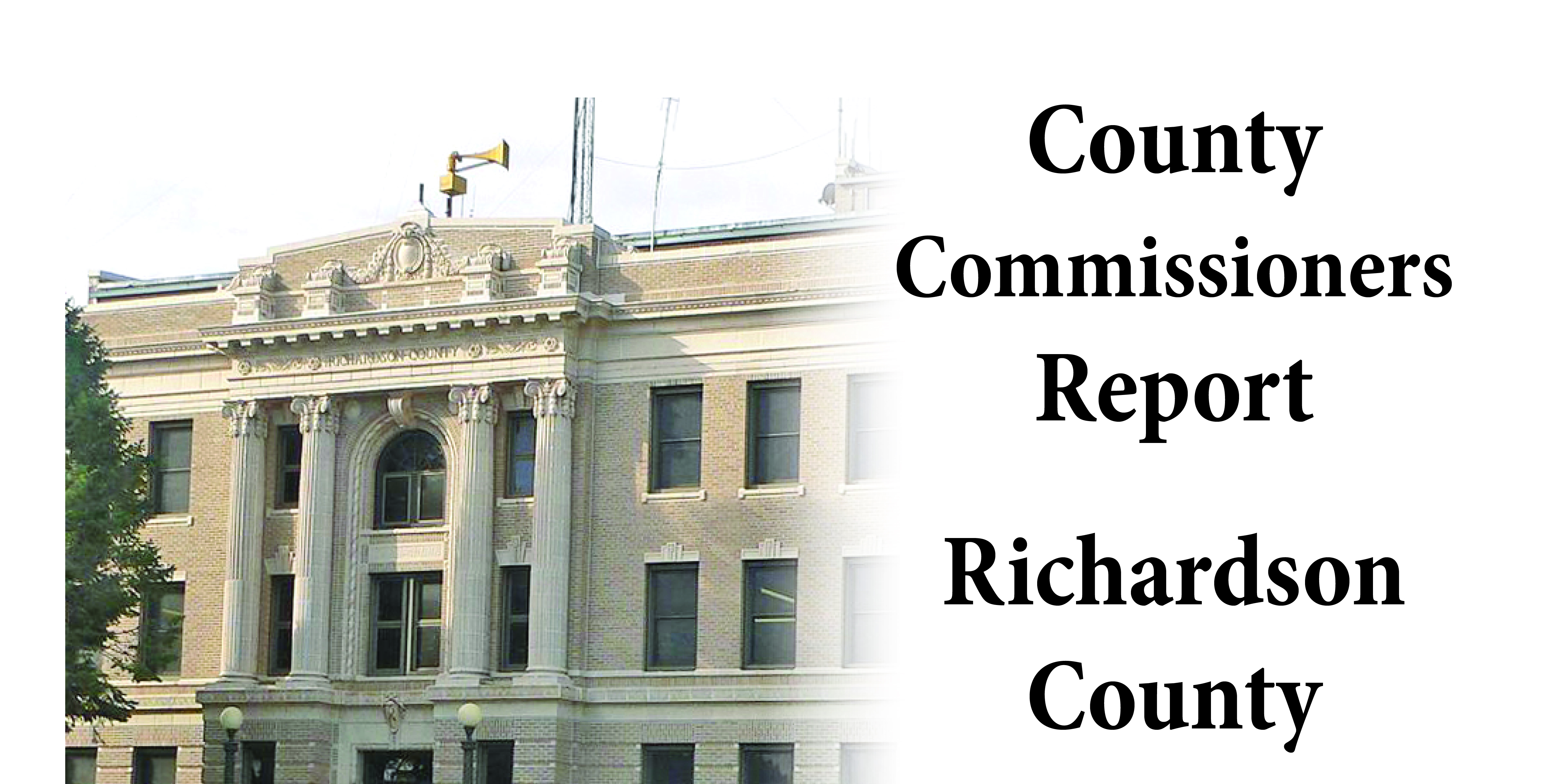
The tax season came and went, and left some of us asking ourselves “how did I pay so much?” Everyone feels a tax burden of some kind, but its weight can vary across different states and counties. Curious to see how Richardson County’s tax burden stacks up against others in Nebraska?
A recent study by SmartAsset calculated the amount of money a specific person would pay in income, sales, property and fuel taxes in each county in Nebraska, and ranked them lowest to highest in terms of tax burden. Believe it or not, Richardson County ranked among the lowest in terms of tax burden. Only Butler, York, Cedar, Knox and Custer Counties were found to have a lower tax burden index.
To better compare income tax burdens across counties, SmartAsset utilized sources such as the U.S. Census Bureau, 2013 American Community Survey, and the MIT Living Wage Calculator, as well as other government sources, and used the national median household income. They then applied relevant deductions and exemptions before calculating federal, state and local income taxes.
In order to determine sales tax burden they estimated that 35 percent of take-home (after-tax) pay is spent on taxable goods. They multiplied the average sales tax rate for a county by the household income less income tax. This product is then multiplied by 35 percent to estimate the sales tax paid. Each county’s median property tax paid was divided by median property value to determine the median property tax rate by county. This rate was applied to a hypothetical $250,000 property in each county to calculate a representative property tax paid.
For fuel taxes, they first distributed statewide vehicle miles traveled down to the county level using the number of vehicles in each county, then calculated the total number of licensed drivers within each county. The county-wide miles were then distributed among the licensed drivers in the county, which provided total miles driven per licensed driver. Using the nationwide average fuel economy, SmartAsset calculated the average gallons of gas used per driver in each county and multiplied that by the fuel tax. They then added the dollar amount for income, sales, property and fuel taxes to rank the counties. For each of the more than 3,300 counties in the nation, they determined the tax burden a person who makes the national median household income with a $250,000 house who spends 35 percent of take-home pay on taxable goods and drives a weighted number of miles per year.
Richardson County ranked sixth overall. Individually, income tax was 60th ($9,215); sales tax was 40th ($881), property tax was 10th ($3,962) and fuel tax was 32nd ($219).
In 2012, Nebraska cut income tax rates across the board and adjusted the tax brackets in an effort to make the system more equitable. Today, Nebraska’s income tax rates range from 2.46% to 6.84%, with a number of deductions and credits in Nebraska that lower the overall tax burden for many taxpayers. On the other hand, Nebraska’s average effective property tax rate of 1.88% is the highest in the region and sixth highest in the country. Read on to learn more about these and other important Nebraska tax policies.
Nebraska Income Tax
Nebraska enacted their income tax in 1967 as a new source of revenue. The current form of the tax mirrors the federal income tax, with marginal tax rates charged based on income tax brackets. To determine the income with which to calculate your tax bill in Nebraska, you begin with your federal adjusted gross income. This can be found on IRS Form 1040. Subtractions from federal AGI can be made in certain special circumstances, most notably if you have made contributions to a Nebraska College Savings Plan. Those contributions can be removed from AGI up to a total of $10,000 per year.
From there you subtract either the Nebraska standard deduction or your total federal itemized deductions (if you itemized deductions federally). If claiming itemized deductions in Nebraska, you must subtract the amount of the deduction for state and local income taxes if you claimed it.
The standard deduction in Nebraska matches the federal standard deduction. That’s $6,300 for single filers, $12,600 for joint filers and $9,250 for heads of household.
Once you have your Nebraska taxable income, you can calculate income taxes using the rates in the table above. In some cases, after you have determined your initial income tax bill, you may be able to subtract some tax credits to lower the amount you pay, or to increase your refund.
Nebraska Capital Gains Tax
Long-term (and short-term) capital gains are included as regular income on your Nebraska income tax return. That means they are taxed at the rates listed above, between 2.46 to 6.84%, depending on total taxable income.
Nebraska Sales Tax
The state sales tax in Nebraska is 5.5 percent (the City of Falls City adds an additional 1.5 percent, so it’s citizens pay a rate of 7 percent). That is the 22nd lowest state sales tax in the U.S. In addition to that, many cities collect their own sales taxes with rates up to 2%.
The total state and local sales tax rates are collected upon sale of most tangible personal property and some services in Nebraska. Products such as electronics, home decorations, clothing and toys are all subject to sales tax. Important exemptions to the state sales tax include food for human consumption, medicine, medical equipment and newspapers. Sales tax does not have to be paid on these items. However, prepared food and food from vending machines are taxed.
The services that are taxed in Nebraska include computer software, delivery charges, hotel accommodations, satellite and cable TV, telephone services, pest control, detective services, vehicle towing or painting and security services.
Nebraska Property Tax
On average, across all counties, Nebraska has some of the highest property taxes in the U.S. The state’s average effective property tax rate is 1.88%, which means that the average homeowner in Nebraska pays approximately that percentage of her home’s value in taxes each year. That’s the sixth highest effective property tax rate in the U.S.
Nebraska Gas Tax
Gasoline is subject to several taxes in Nebraska. The base fuel tax on gasoline, diesel and ethanol is 25.6 cents per gallon. Gasoline and ethanol are subject to an additional 0.9 cent per gallon “remedial action fee,” while the fee for diesel is 0.3 cents per gallon. That means the total tax on gasoline and ethanol is 26.5 cents per gallon, slightly below the national average gas tax of 29.9 cents per gallon.
Nebraska Cigarette Tax
The cigarette tax in Nebraska is just $0.64 per pack, about three cents per cigarette. That is the 14th lowest cigarette tax in the country.
Nebraska Alcohol Tax
Planning on enjoying a drink while you’re in the Cornhusker State? In that case, you might want to know about the state’s alcohol excise tax. The excise tax rates on alcohol differ between beer, wine and liquor. The tax on beer is 31 cents per gallon, the tax on wine is 91 cents per gallon and the tax on liquor is $3.75 per gallon.
Nebraska Inheritance Tax
The Nebraska inheritance tax varies depending on the relation of the inheritor to the decedent. The tax identifies three categories of potential inheritance recipients: close relatives, remote relatives and others.
Close relatives include siblings, parents, grandparents, children, grandchildren and other direct descendants. Inheritors in this category receive no tax on the first $40,000. Above that amount, the tax for this category is 1%.
Remote relatives receive an exemption of $15,000, above which the tax rate is 13%.
Any person receiving an inheritance who is not in one of the first two categories falls into the third category. For these inheritors, the exemption is $10,000 and the tax rate on all inheritance above that amount is 18%.

